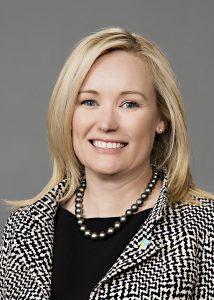The year 2008 was ushered in without any doubt that it would be one to remember. The presidential campaign was historic perhaps for its length, as well as the breadth of candidates. But, it was also the first time in 80 years that an incumbent president or vice president was not on the ballot. On top of that, a woman and a black man duked it out for the Democratic nomination. In the end, history was made on a cold November night when the nation elected its first black president.
If that was all that happened during 2008, it would have been an eventful year for sure. But 2008 might be a year nonprofits would rather soon forget. Faced with massive increases in the cost of energy and fuel, which drove prices of other necessities skyward, nonprofits were whacked early and often by inflation.
A year after having to deal with postage increases, nonprofits probably wished that was all that went up during 2008. This year, expenses shot up in virtually every area, be it energy or fuel to food and other materials and needs. With inflation going more than 4 percent in 2007 — the largest increase since 1990 — nonprofits, like everyone else, had to find ways to cut back this year. If only inflation and rising expenses were all that nonprofits had to worry about this year.
Mortgage-backed securities and subprime mortgages that kept the housing bubble going finally popped. With it went some titans of the financial industry in Bear Stearns and Lehman Brothers and signaled the start of a financial downturn some say hasn’t been seen since the 1930s – also the last time an incumbent president or vice president was not on the ballot.
Giving was still up – but barely
For all the pessimism about the near future, and specifically 2009, charitable giving still was up in the latest reports. Giving USA 2008 released the latest charitable giving numbers in July, which portrayed a rather flat level of giving during 2007. Buoyed by a boost from bequests and foundations, charitable giving reached $306.39 billion last year. While that was up almost 4 percent from 2006, when adjusted for inflation, it was up just 1 percent. As a percentage of Gross Domestic Product (GDP), giving remained at 2.2 percent, roughly the level it has been at for decades.
Bequests were up almost 7 percent, 4 percent with inflation, compared to the previous year, to $23.15 billion. Foundation grantmaking saw the biggest increase — 7.3 percent when adjusted for inflation — to $38.52 billion.
Individual giving was still responsible for almost three-quarters of all contributions, with $229.03 billion, which remained virtually flat when inflation was taken into account.
Some nonprofits have reported some tailing off in donations this year, however others are hitting their ’08 goals, but in general, many seem to be waiting for the other shoe to drop next year.
Despite concerns that charitable giving will dry up next year, the impact is likely to be muted, according to Tom Pollak, program director for the National Center for Charitable Statistics at the Urban Institute in Washington, D.C. He estimates that 12 percent of total giving comes from private foundations and 4 to 5 percent from corporations.
Cuts in domestic spending seem likely at the federal, state and local level, with almost 40 states facing budget deficits, according to Pollak. About one in four nonprofits, excluding congregations, get 80 percent of revenue from fees. Although government grants account for only 9 percent of total revenue of the nonprofit sector, some organizations rely more heavily on this source than others, he added. Six percent of those that filed Form 990s last year rely exclusively on grants from government.
But 2009 and beyond is not without its peril. Nearly 23 percent of organizations that filed 990s in 1995 have either ceased to exist or have fallen below the $25,000 filing threshold, according to Pollak. "The tumultuous economic period in the next couple years is likely to quicken that pace," he said.
Charity revenues have grown continuously since 1995, even through the 2001 downturn, but many nonprofits are surviving on the edge. "The volatility of the market bodes poorly for them," Pollak said, adding that foundation and individual giving is unlikely to fall precipitously. "That’s the good news," he said, but even if the economy recovers, the instability is likely to make donors more cautious about opening their wallets in 2009.
Roberton Williams, principal research associate at the Urban-Brookings Tax Policy Center, estimated that the federal government collected $55 billion less last year as a result of tax deductions related to the $306 billion in charitable giving. Of that total, $42 billion was in individual income taxes, $10 billion from estates, and the remaining $3 billion from corporations.
The estate tax has been waning since 2001, Williams said, and is expected to disappear altogether in 2010 before returning in 2011. With no estate tax, he estimates a 15- to 30-percent decline in bequests and drop of 6 to 12 percent drop in overall giving.
While an administration led by Barack Obama has no plans for changes in corporate taxes, it is expected to raise income taxes on the wealthy. The highest income tax payer, who is most likely to itemize, pays 35 percent in federal income taxes. Obama wants to return that to 39.5 percent, as it was during the Clinton administration eight years ago, Williams said. Since a higher tax rate decreases the cost of giving to a donor, he estimated that move could boost charitable giving by 4 to 8 percent.
Paul C. Light, the Paulette Goddard Professor of Public Service at New York University’s Robert Wagner School of Public Service, sees three possible scenarios for the sector. First, significant withering of existing nonprofits is possible. While most organizations will remain, they will survive "on the edge," with cuts in discretionary spending and more expectations on their workforce, but no real net reduction in their numbers.
Another possibility is winnowing of nonprofits, with more deliberate efforts to decide which distressed nonprofits should be allowed to go under and which should be propped up. "Like the banking bailout, in theory," Light said, determining which organizations should go or not. "I’m not sure that worked very wellÉlending actually has gotten tighter among surviving banks," he said, estimating a 70 percent probability for these two scenarios.
The third and final scenario in Light’s vision is an "awakening" among nonprofits, with the sector finding a voice of engagement during the transition of the new administration. "That might produce a greater sense that the sector needs to be supported aggressively," he said, "just as we’re supporting other industries. Everyone’s getting bailed out except for the sector…One thing we’re not talking about is what we’re doing to help distressed nonprofits." But that’s not what Light is hearing from foundations. Instead, it’s about getting rid of poorly performing nonprofits.
Which scenario will come to pass depends on three things, according to Light: the level of trust in nonprofits to spend money wisely; how much willingness there is to invest in capacity building; and, whether this is seen as a period of opportunity or crisis.
Light said he is hopeful of a realization, similar to one at the beginning of the 2001 recession after the Sept. 11 attacks, that nonprofits play an important role in society. He views an opportunity for the charitable sector to influence the course of history over the next year. "I think that’s an important opportunity to be taken advantage of. Often the sector is done to as an afterthought. I think we can be proactive," he said.
Robert Egger, founder of DC Central Kitchen and a co-founder of the Nonprofit Congress, calls 2008 the beginning of the end of an era. "We’re coming into what’s known as the end of an era of extra," he said, and the entire nonprofit sector has been built on the idea of extra, whether it’s "extra" money or "extra food."
A ServiceNation Summit
Despite what seemed like nothing but bad news in the latter part of 2008, the sector took center stage on a national level, and not because a charity was getting ripped off.
The ServiceNation Summit convened in New York City on Sept. 11-12, bringing together both major-party candidates, along with leaders from more than 100 nonprofits, both national and local, to push the issue of national service. A town hall-style forum featured Obama and Sen. John McCain, interviewed by Judy Woodruff of the News Hour and TIME’s Richard Stengel, about topics related to service and nonprofits. The summit was organized by Be The Change, Inc., City Year, Civic Enterprises and the Points of Light Institute.
The goals of the summit were to push legislation through Congress by next September and establish a national day of action on Sept. 27. The Voluntary National Service Act would boost the roughly 70,000 staff who receive stipends through AmeriCorps to 1 million by 2020.
The ServiceNation Summit was but one stop for Republican McCain and Democrat Obama in the longest presidential campaign in history. With no incumbent president or vice president on the ballot for the first time in 80 years, even the nonprofit sector paused to keep an eye on the race, which featured two senators: one, a former prisoner of war who served in Vietnam, and another, a community organizer from Chicago. New leaders for some of the big boys
Four of the largest nonprofit organizations in the country selected new leaders in 2008. The American Red Cross, The Nature Conservancy, The Smithsonian Institution and the American Heart Association (AHA) are regulars in the NPT 100, an annual study of the largest nonprofits in the nation.
Jeff Raikes was appointed to succeed Patty Stonesifer as president and CEO of the largest foundation on the planet, the Bill & Melinda Gates Foundation. Raikes was appointed in May and started on the job in September. Also, Bradford Smith replaced Sarah Engelhardt as president of The Foundation Center in October.
The Smithsonian Institution, which saw its previous secretary resign in March 2007 amidst a scandal regarding expenses and executive compensation, appointed a college president in March. The 17-member Board of Regents elected G. Wayne Clough, president of the Georgia Institute of Technology, as the 12th secretary of the Smithsonian. The 66-year-old, who had led Georgia Tech since 1994 and oversaw two capital campaigns that raised almost $1.5 billion, assumed his duties as of July 1.
A former marketing executive at AT&T and professor at Harvard Business School, Gail McGovern inherited one of the toughest jobs in the nonprofit sector. The newest president and CEO of the American Red Cross was appointed in April to succeed former IRS Commissioner Mark Everson. He resigned after just six months in November 2007 after it was revealed that he had an extramarital affair with a Mississippi chapter president.
McGovern assumed the post in June, becoming the 10th CEO or interim CEO for the disaster relief agency in the past 12 years. There wasn’t much time for a honeymoon. Just two months earlier, the Red Cross had laid-off about a third of its staff in Washington, D.C., to try to close a $200-million operating deficit. By summer’s end, the agency issued a public plea for donations to its Disaster Relief Fund, which had run dry after responding to floods in the Midwest, wildfires in California, and another round of hurricanes in the Southeast.
These "silent disasters," which didn’t bring huge media attention and with it a slew of donations, cost the Red Cross some $263 million to respond to since September 2007 but only managed to raise $63 million in donations, leaving a $100 million gap.
After asking Congress for $150 million, the Red Cross was granted a $100-million appropriation, leaving it to raise the remaining $100 million to cover those $263 million in expenses by year’s end. About $43 million had been raised through October.
While there was an outpouring of donations in response to an earthquake in China and cyclones in Myanmar in the spring, it wasn’t to the extent seen several years ago after the Asian tsunami or Gulf Coast hurricanes. In the weeks following the disasters about $70 million was raised but early on several relief agencies reported lagging donations.
Not long after the Red Cross announced its new leader, The Nature Conservancy tapped a new CEO. Mark Tercek, director of the Center for Environmental Markets for Goldman Sachs, was appointed to succeed Steven McCormick, who left the previous October.
Last month, Nancy Brown was appointed as the new president and CEO of Dallas-based American Heart Association, replacing M. Cass Wheeler. Brown has been with the AHA since 1986, the last seven years as chief operating officer.
There were also changes at smaller organizations, including Tim Delaney as executive director of the National Council of Nonprofits (formerly the National Council of Nonprofit Associations) succeeding Audrey Alvarado. And while there has been no successor named as yet, Eugene Tempel announced his resignation after more than a decade as executive director of the Center on Philanthropy at Indiana University. He became president of the IU Foundation in September.
On top of those nonprofit appointments, the agency that oversees nonprofits got a new man at the top. Doug Shulman was appointed in March, becoming the 47th commissioner of the Internal Revenue Service (IRS).
No year would be complete without some kind of scandal or wrongdoing in the nonprofit sector. The Points of Light Institute, barely a year after it was created from a merger between Points of Light Foundation and HandsOn Network, stumbled upon financial irregularities related to its eStore. An independent contractor apparently sold millions of dollars worth of unauthorized travel certificates.
In the end, the nonprofit refunded nearly $7 million to almost 4,500 customers and an investigation by the U.S District Attorney’s Office in Washington, D.C., is continuing.
Software consolidation
Consolidation and acquisition within the nonprofit software space continued into 2008 but not at the break neck pace of 2007. After spending $60 million on Target Analytics and $24 million on eTaptestry in 2007, Blackbaud acquired online software as a service vendor Kintera. The Charleston, S.C.-based Blackbaud announced in May that it had bought Kintera for $46 million, with the deal finalized in July. Blackbaud paid $1.12 a share, a 65-percent premium over Kintera’s $0.68 per share.
San Diego-based Kintera, which had been trading below a $1 a share and in danger of getting de-listed by NASDAQ, had initiated another round of layoffs in March, for the third time in as many years.
Austin, Texas-based Convio, which saw its plans for a $86-million Initial Public Offering (IPO) abandoned in August with signs of a weakening economy, released Common Ground in September. The Web-based open source constituent relationship management (CRM) system is built on salesforce.com’s platform.
Whether the 2009 will be anything like 2008 is anybody’s guess. Will the market finally bottom out? Will the economy get worse before it gets better? Will donors stay with our organization? If you can bet on anything for 2009 it’s that there will be no shortage of challenges, particularly for the nonprofit sector.
Sometimes the worse the economy gets, "the more Americans respond to the needs of their fellow citizens so that the nonprofits that deal with the homeless, the shelters, the hungry, those kinds of programs, I suspect will continue to do well even during the economic downturn," said Rodney Jackson, president and CEO of the National Center on Black Philanthropy. Still, he expects organizations that rely heavily on corporate donations will take a hit as a result of the economic downturn.
"It’s hard to say what’s going to happen next year," Jackson said. "I’m optimistic that people will respond." NPT












